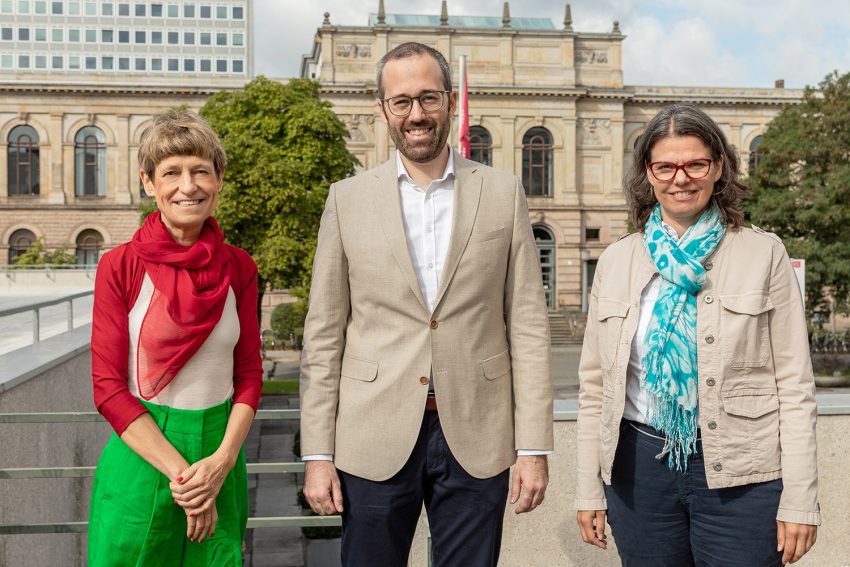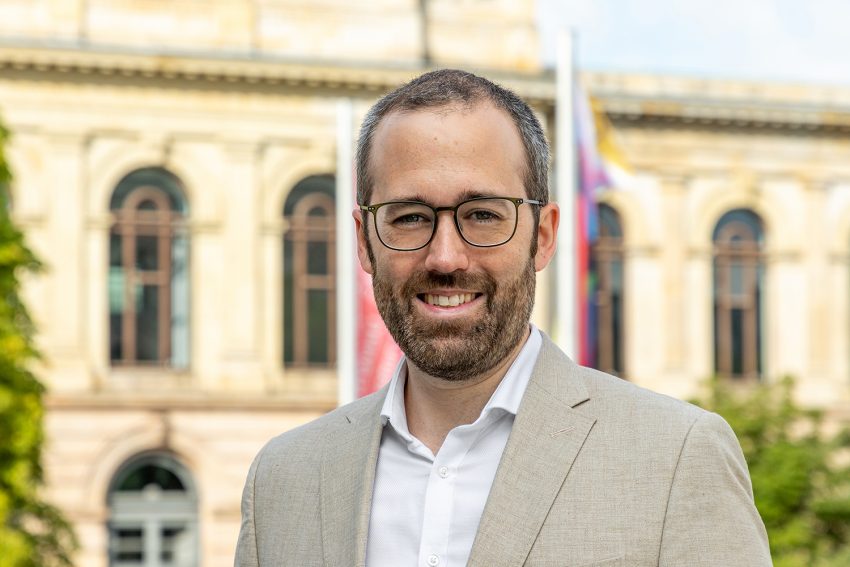“I want to make uncertainties predictable” Ulrich Römer is a professor at the Institute of Acoustics and Dynamics
In September 2017, Ulrich Römer took up his junior professorship at the Institute of Dynamics and Vibrations. Six years later, he was appointed full professor at the Institute of Acoustics and Dynamics. There he works on methods to improve the validity of predictions and models. The information gained helps in research into sustainable aviation, for example in optimising cabin noise and the use of fuel cells in aircraft. Here he answers our questionnaire and introduces himself, his research projects and teaching ideas.
Professor Römer, why did you choose TU Braunschweig?
My field of research, uncertainty quantification, was still relatively new in 2017. In Braunschweig, however, the former Institute for Scientific Computing under Prof. Matthies is very well known in this field. There are also not many such professorships in engineering. I didn’t have to think long about it and applied straight away.
You have now been promoted from junior professor to full professor. A junior professorship is still a relatively new career path. How do you look back on this time, what are the advantages and disadvantages?
I look back fondly, although it was a very challenging time. As a junior professor, you are given a lot of freedom at an early stage to pursue your ideas independently. You don’t want to give that up. There are also many opportunities to work with colleagues. The topic is usually topical and important for the faculty/university, e.g. in collaborative research. But there is also the constant feeling that you have to prove yourself and maybe you could do one or two more things. Today, I would definitely recommend the junior professorship if it is combined with a tenure track. In my time, this was still being developed. It makes it easier to plan your academic career.
What exactly are you currently working on in your research?
I am developing models and new simulation methods for various engineering applications. The main aim is to take into account and make calculable uncertainties in modelling, and especially in linking models and data. Many people will be familiar with this from weather forecasting, where large variations in predictions can occur. In engineering applications, we do not know the exact behaviour of complex materials, the boundary conditions of the environment, etc., and often have insufficient data. When methods from probability theory and statistics are combined with complex simulation methods from engineering science to quantify these uncertainties, the research questions I am concerned with arise.
What are your main research areas and projects at TU Braunschweig – especially in the SE²A Cluster of Excellence?

Appointment 2023: Prof. Ulrich Römer with President Angela Ittel (left) and Prof. Sabine C. Langer from the Institute of Acoustics and Dynamics. Photo credit: Kristina Rottig/TU Braunschweig
I mainly do research on issues arising from the focus on mobility. In SE²A, colleagues from my institute are working on the simulation of cabin noise for new low-energy aircraft configurations. My contribution here is to take into account the uncertainties I mentioned earlier. Another topic is the modelling and simulation of the thermal output of a fuel cell that could be installed in aircraft in the future. This is a complex process, because you have to take into account wind resistance, for example, and it requires the interaction of different disciplines with many uncertainties in the modelling. I would also like to set new priorities in the field of ground-based mobility.
What motivated you to do research in this area?
Uncertainty quantification has fascinated me since my PhD, because you can work with sophisticated mathematical concepts and I find it exciting to solve complex problems from an application point of view. The topic is also highly relevant for many applications, with many points of contact for my research.
What is your day-to-day work like in three key words?
Meetings, teaching, research


